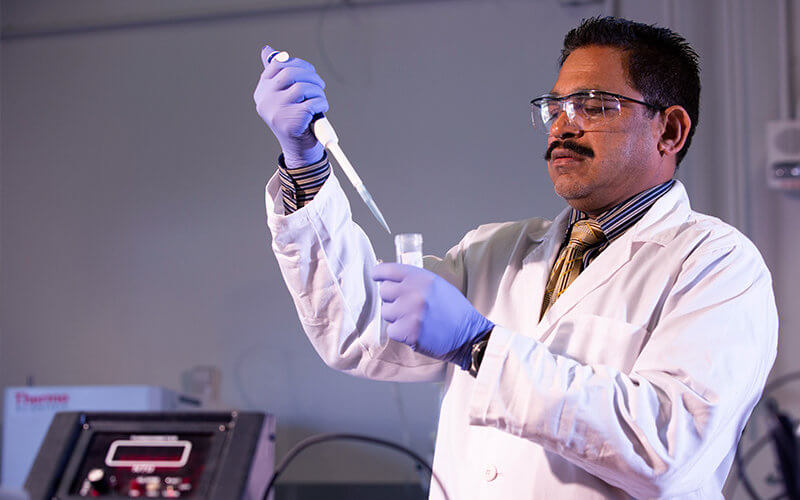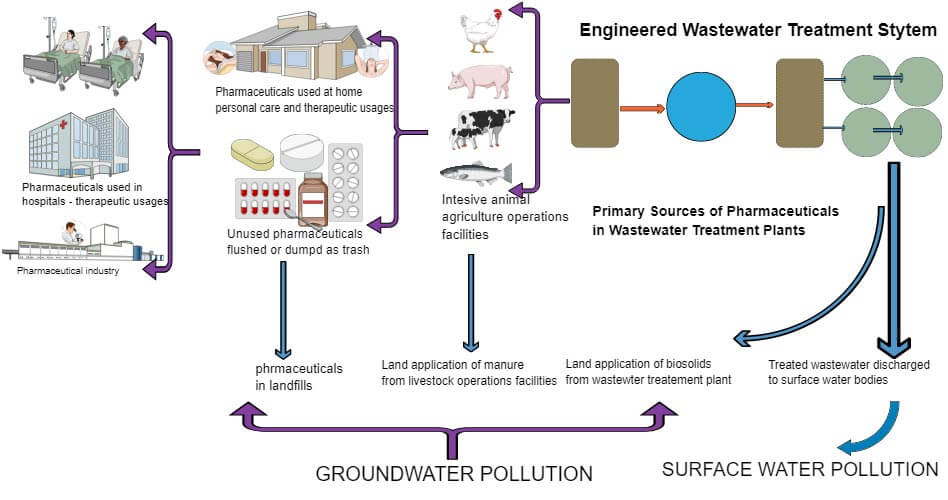
With the presence of pharmaceuticals and insecticides in the environment becoming an emerging threat to human health and ecology, Cal State Fullerton environmental engineer Sudarshan Kurwadkar is searching for solutions.
“We should be very much concerned about the presence of bioactive compounds, such as antibiotics, hormones, endocrine disruptors and other drugs in the environment,” Kurwadkar said. “These compounds are designed to elicit a response at low concentration levels. Thus, their presence in the aquatic environment has an immediate biological impact which is of grave concern.”
Kurwadkar recently delivered the inaugural L. Donald Shields Excellence in Scholarship and Creativity Award Lecture titled, “Environmental Occurrence of Contaminant of Emerging Concern — Human Health and Ecological Consequences.” He is the 2020 recipient of the university’s Shields award, given to a faculty member for outstanding scholarship and/or creative activity.
The virtual lecture was held during this spring’s Research Week, presented by the Office of Research and Sponsored Projects. Watch the lecture below.
Kurwadkar, professor of civil and environmental engineering, discussed how pharmaceuticals, including antibiotics, analgesics and hormones, routinely used in human therapy, eventually end up in drinking and wastewater treatment systems. These systems are primarily designed to remove organic materials and are inadequate in removing low levels of pharmaceutical compounds, he explained.
Similarly, insecticides used in vineyards, citrus orchards and other agricultural operations become part of the environment.

“We must stop creating pollution to begin with — instead of controlling the pollution after the fact,” he said.
Kurwadkar’s key takeaways from his lecture are:
- Pharmaceuticals are used in human and animal therapy. Improper management of wastewater and misuse, overuse and improper disposal of unused drugs has led to widespread contamination of soil, groundwater and surface water.
- The presence of bioactive compounds such as antibiotics, hormones and analgesics could perturb ecology and breed antimicrobial-resistant microorganisms, known as ARM.
- The growth of ARM is one of the top 10 global health problems with the potential to become a global epidemic if left unchecked.
- Antimicrobials offer an effective defense against opportunistic infection. The widespread occurrence of these compounds in the environment may annihilate our most common survival weapon — antibiotics.
- Prudent use in human and animal therapy and safe disposal of unused pharmaceuticals could prevent antimicrobial pollution in the environment.
Kurwadkar received a National Academies of Sciences, Engineering and Medicine fellowship through its National Research Council Research Associateship Programs. He is currently on sabbatical working at the U.S. Environmental Protection Agency in Oklahoma as a senior research associate. In this role, he is studying the remediation of chromium (VI) in groundwater, which was the focus of the movie “Erin Brockovich.” The film documents the widespread pollution of chromium in Hinkley, a town in Southern California.
“We are focusing on using zero-valent iron as a potential amendment for the permeable reactive barrier to reduce chromium concentration in groundwater,” said Kurwadkar, who began his yearlong fellowship this past January.